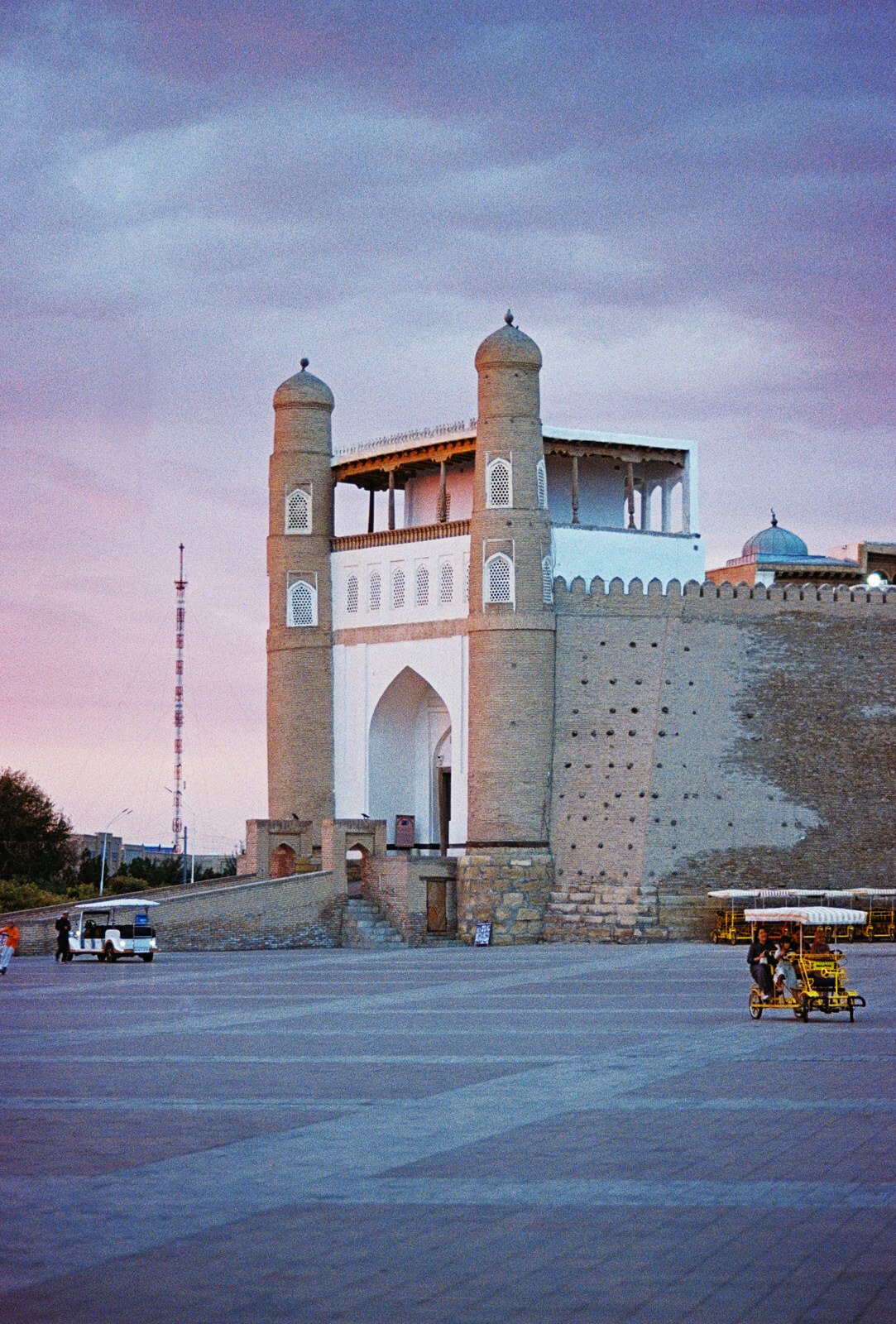
Eventide, in Uzbekistan, and night comes in to berth, filled with soft, fleeting light. I’ve never seen anything like it anywhere else. It sweeps the horizon like a breeze. Over steppes and deserts stretching thousands of miles, the radiance it produces is one of a kind.
I experienced this strong, extraordinary sensation for the first time in Bukhara. My friend Annie and I had taken a Soviet-style night train from Samarkand, on which we had played backgammon and drunk numerous cups of tea. To stock up on boiling water, we had to go and get it from an enormous samovar located at the entrance to the carriage. Once we arrived in Bukhara, tired but happy, we left our luggage in the hotel and went straight out, before darkness fell, to see the Charminar and its four bulb-shaped minarets. I remember how Annie’s breathing changed slightly, and then her words: “Have you seen that light?” Yes, I had seen it and I knew that she’d seen it too.
The moon wasn’t even full. There was no longer a white light, like at midday. It was a bluish, blurred, hazy moon. The streets were swathed in it. It was a glow that blended with the blue of the Uzbek monuments and seemed to glide from one to the other.
We looked at the blue ray in silence. Alice tried to photograph it. My heart was beating fast, I almost feared that I’d make a wrong move and the whole vision would disappear. In French, oddly, despite seeming to say the opposite, the expressions “tombée du jour” and “tombée de la nuit” mean the same thing—twilight. I had to go as far as Uzbekistan to understand that that wasn’t the way things were.
That was my first “Uzbek illumination”, my baptism of light, in a certain sense. I knew the gleaming, dazzling light of Iran, but it’s different. There had been other Uzbek light before, but it was as if from its future vantage point, the light that night in Bukhara somehow managed to throw radiance back on those bygone nights. The other light only came back to me after I’d seen that one. That is to say, my second Uzbek light was the first in order of time, but not in my memory. It was a bright ray on the surface of a cup of tea. A blue and white cup, typical of the ones you find in Uzbekistan. Late afternoon in Samarkand, the burning winter cold, a cup resting on the purple Persian carpet and light suddenly bursting onto the surface, like a flash. The same blade of light glides along as far as a Russian samovar, but this time the brightness is less precise: it’s beating. It’s the same blade that transforms into a sparkling glare on the water lapping up against the city’s old tea houses, to then pucker up along the shores of the pool where some swans are swimming. That ray of light arrived here on its way from Tashkent, the capital of the country, where it ricocheted off some Brutalist buildings and got engulfed in the dozens of windows embedded in the façade.
So, between the two cities, there is a more blinding light, the light of the steppes. The dry earth, the big spaces, the horizon that fades away in the distance on the Amu Darya river, the sun that rises along that same line of the horizon. You get the feeling you’re at the end of the earth—and you are. A dog comes up, it’s friendly, it wants to be stroked. It’s a light brown dog, like the ones we’ve come across hundreds of times. It looks like it lives there, near a service station in the middle of the steppe. It’s seeking some human company and we give it some.
This is the landscape that attracted me like a lover to central Asia. I remember the geography lessons at school when we had to colour the seas blue, the mountains red, the savannah green and… the steppes? Hm, what colour? Yellow maybe. My imagination painted the steppes with a big, yellow brush. As it turns out, I wasn’t so far off. A golden landscape, a blonde light, not so suave when the sun is at its peak. Instead of today’s service station, you imagine the sandy caravans on the Silk Road, coming from China, travelling as far as Venice after surviving the terrible Taklamakan desert. Like us today, they were going towards the city and this time they found a blue light there; gigantic minarets; the blue (again) borders of the Registan in Samarkand. The caravaneers definitely took the memory of those lights with them. And so have I: I take my Uzbek lights everywhere with me. They’re there, lodged in the creases of my memory, like a pocket, ready to burst out.





